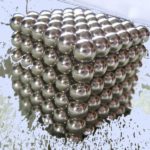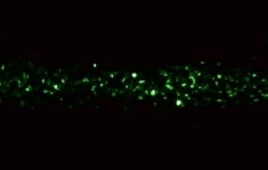Teschler on Topic
Leland Teschler • Executive Editor
[email protected]
On Twitter @ DW_LeeTeschler
Examine Silicon Valley and some of the other notorious high-tech hotspots and you can’t help  notice the building boom in research labs. Researchers of yesteryear often referred to themselves as lab rats partly because their surroundings were usually dark and dank. In contrast, scientists and engineers toiling in this new crop of labs are more likely to be housed in spectacular architecture sitting in expensive urban neighborhoods on campuses with resort-like amenities.
notice the building boom in research labs. Researchers of yesteryear often referred to themselves as lab rats partly because their surroundings were usually dark and dank. In contrast, scientists and engineers toiling in this new crop of labs are more likely to be housed in spectacular architecture sitting in expensive urban neighborhoods on campuses with resort-like amenities.
These super-expensive digs are meant to create ideal conditions for creativity and scientific breakthroughs. One problem: There’s little evidence that better architecture begets better engineering or better thinking.
At their core, these modern-day research sanctoriums attempt to duplicate the social interactions among circa WWII scientists and engineers at places like Los Alamos, Oak Ridge, and M.I.T.’s RadLab. The creative efforts coming out of RadLab, for example, have been ascribed to the fact that it housed a large number of research projects whose personnel were haphazardly crammed together. The arrangement made for chance encounters among researchers from different backgrounds. The resulting conversations sometimes gave rise to rapid scientific advances and promoted the idea in popular culture that happy accidents and lateral thinking could accelerate technical work.
The irony, though, is that the facilities in which the happy accidents took place were anything but grand. Buildings at Los Alamos back then, for example, were little more than hastily constructed huts. Structures occupied by other big-name research outfits weren’t much better.
Today, it isn’t just buildings that are being designed to help speed technical advances; it’s also the spaces and furniture within them. Historians credit the origins of creative working environment themes partly to Xerox’s Palo Alto Research Center which opened in 1970. The main conference room at PARC had floor-to-ceiling white boards, no conference table, and beanbags for chairs.
But the beanbags weren’t there because they made their occupants creative. Though the beanbags did impart an air of informality and kept people relaxed, part of their purpose was to help discourage pissed-off researchers from jumping up and getting in the face of presenters when discussions got heated.
A recently published book provides an interesting dig into such issues. Called Laboratory Lifestyles and edited by Sandra Kaji-O’Grady, Chris Smith, and Russell Hughes, it examines the architectural, economic, and social perspectives of new mega-labs with history in mind. It also investigates how “lifestyle science” affects actual science, including what happened among the occupants locked inside Biosphere 2 for two years.
One of the more interesting sections covers Applied Sciences NYC, billed as a vision for world-class applied sciences and engineering campuses in the Big Apple. Built on preemo real estate, ASNYC campuses have been likened to urban cruise ships, functioning as autonomous (and likely expensive) worlds seemingly independent of the city in which they sit.
Surprisingly, Laboratory Lifestyles doesn’t point out the major downside to ASNYC dreams: It’s hard to imagine a more divisive development in a country where there’s already a serious us-versus-them attitude between working-class citizens and elites.
Architects designing palatial lab facilities don’t seem to understand that the people whose behavior they are trying to recreate had a sense of purpose, not a sense of architecture. And ASNYC proponents should recall that the work environments they promote had roots in chairs procured to help keep people from taking a swing at each other. DW
You may also like:
Filed Under: Commentaries • insights • Technical thinking, Trends








